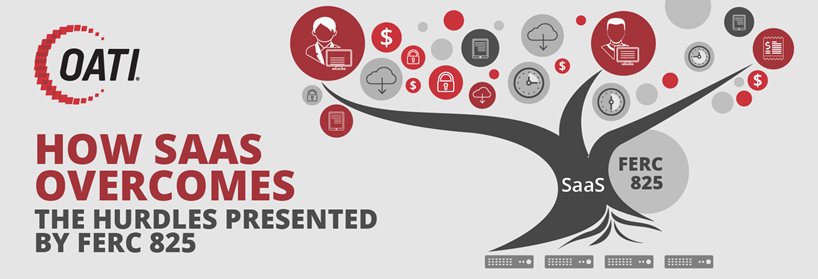Home » Blog » Trading & Risk Management » How SaaS Overcomes the Hurdles Presented by FERC Order 825
How SaaS Overcomes the Hurdles Presented by FERC Order 825
FERC Order No. 825 of 2016 stands as one of the most impactful rulings to come out of the Federal Energy Regulatory Commission (FERC) in the last few years. Today, independent system operators (ISOs) and regional transmission organizations (RTOs) across the U.S. grabble with redoing their systems to handle five-minute and fifteen-minute pricing intervals and to yield the numerous benefits. For example, efficient generators that can react to intra-hour energy and ancillary demands will reap the monetary benefits that the smaller price intervals provide. Likewise, intra-hour pricing intervals provide greater reliability to the grid. In actuality, everything looks great until you realize that there may be some Bid-to-Bill system challenges that were overlooked in all the fanfare.
Back when all markets were still operating in hourly increments, one could run a settlement or Profit and Loss (P&L) report for an entire month and get results in a matter of seconds. Now, that same report contains up to twelve times as much data and takes a Bid-to-Bill designed for hourly data, taking several minutes to produce reports that used to take seconds. This is especially true when multiple users are hitting the system simultaneously, thus overloading the limited hardware that most traditional “client-hosted” systems are built on. Does this mean that impatient traders and (only somewhat more patient) settlement analysts have to settle for such inadequate performance?
Enter the OATI SaaS Model
Our Software-as-a-Service (SaaS) solutions (click here to read more about the value of SaaS) reside in OATI’s Cloud complete with Active/Active configuration. This means that as multiple users simultaneously request large, data heavy reports, the OATI SaaS solution promptly determines which servers have the most available bandwidth and shifts processing load accordingly.
This concept of redistributing server load is referred to as Server Load Balancing, which OATI performs effectively because only a small percentage of our customers will attempt to access the same database at the exact same time. The remaining customers may include Bid-to-Bill systems in different time zones, or perhaps Energy and Commodity and Trading Risk Management (ETRM/CTRM), reliability, and smart grid systems whose peak loading times differ from a typical Bid-to-Bill system. To the impatient end users, who all happen to be hitting the system at the exact time, this just means that they can still get their enormous reports within seconds.
Key Benefits of OATI’s SaaS Solution:
• Maintains a complete network infrastructure
• Ensures application availability via the network
• Provides enhanced security and Cloud storage
• Keeps individual customers’ data completely separate, secure, and accessible
• Offers complete access to the latest versions of application software
• Allows for greater cost-savings
Looking to unlock the benefits of OATI’s SaaS solutions? Please contact Sales@oati.net for more information.
About the Author
Mr. Salah Khuhro has over 18 years of experience in the ETRM industry. As OATI Associate Vice President of Sales, Mr. Khuhro oversees OATI’s strategy to provide optimal ETRM Solutions to Investment Banks, Power Marketers, Independent Power Producers (IPPs), and Hedge Funds. Experience in Power Trading, Scheduling, and Settlements allows Mr. Khuhro to develop strategic recommendations with respect to a client’s ETRM business needs.
- January 6, 2018
